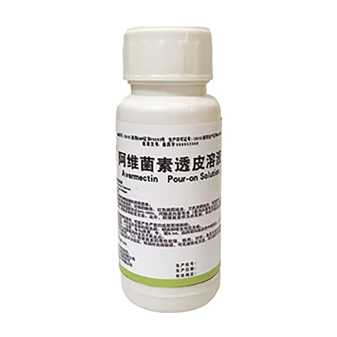- Afrikaans
- Albanian
- Amharic
- Arabic
- Armenian
- Azerbaijani
- Basque
- Belarusian
- Bengali
- Bosnian
- Bulgarian
- Catalan
- Cebuano
- Corsican
- Croatian
- Czech
- Danish
- Dutch
- English
- Esperanto
- Estonian
- Finnish
- French
- Frisian
- Galician
- Georgian
- German
- Greek
- Gujarati
- Haitian Creole
- hausa
- hawaiian
- Hebrew
- Hindi
- Miao
- Hungarian
- Icelandic
- igbo
- Indonesian
- irish
- Italian
- Japanese
- Javanese
- Kannada
- kazakh
- Khmer
- Rwandese
- Korean
- Kurdish
- Kyrgyz
- Lao
- Latin
- Latvian
- Lithuanian
- Luxembourgish
- Macedonian
- Malgashi
- Malay
- Malayalam
- Maltese
- Maori
- Marathi
- Mongolian
- Myanmar
- Nepali
- Norwegian
- Norwegian
- Occitan
- Pashto
- Persian
- Polish
- Portuguese
- Punjabi
- Romanian
- Russian
- Samoan
- Scottish Gaelic
- Serbian
- Sesotho
- Shona
- Sindhi
- Sinhala
- Slovak
- Slovenian
- Somali
- Spanish
- Sundanese
- Swahili
- Swedish
- Tagalog
- Tajik
- Tamil
- Tatar
- Telugu
- Thai
- Turkish
- Turkmen
- Ukrainian
- Urdu
- Uighur
- Uzbek
- Vietnamese
- Welsh
- Bantu
- Yiddish
- Yoruba
- Zulu
Pro . 03, 2024 17:07 Back to list
200 mg/ml Oxytetracycline Solution for Effective Treatment and Research Applications
Oxytetracycline A Comprehensive Overview of 200 mg/ml Solution
Oxytetracycline is a broad-spectrum antibiotic that belongs to the tetracycline class of medications. It is renowned for its efficacy against a wide range of gram-positive and gram-negative bacteria, as well as certain protozoa. This article focuses on the formulation of oxytetracycline at a concentration of 200 mg/ml, exploring its uses, mechanisms, dosage, and safety considerations.
Chemical Properties and Mechanism of Action
Oxytetracycline is derived from the Streptomyces genus of bacteria. It operates by inhibiting protein synthesis in bacteria, a crucial process for bacterial growth and reproduction. The antibiotic achieves this by binding to the 30S ribosomal subunit, preventing the attachment of aminoacyl-tRNA and thereby halting the translation of mRNA into proteins. This action not only impedes bacterial growth but also reduces the severity of infections.
The 200 mg/ml concentration of oxytetracycline is particularly useful in certain clinical settings, allowing for a more significant dose to be administered, which is often necessary in severe infections. This concentrated form is usually employed in both human and veterinary medicine due to the urgent need for rapid action in serious cases.
Indications and Uses
Oxytetracycline is versatile and can treat a range of infections. In human medicine, it is commonly indicated for
1. Respiratory Tract Infections Including pneumonia and bronchitis caused by susceptible bacteria. 2. Skin Infections Such as acne vulgaris, cellulitis, and certain types of rosacea. 3. Urinary Tract Infections Particularly those caused by E. coli and other susceptible organisms. 4. Chronic Periodontitis By reducing bacterial load in periodontal pockets.
In veterinary medicine, oxytetracycline is frequently used for respiratory and enteric infections in livestock and pets
. Its effectiveness against various pathogens makes it an essential tool in managing bacterial infections.oxytetracycline 200 mg ml

Dosage and Administration
The administration of oxytetracycline, particularly at the concentration of 200 mg/ml, requires careful dosage adjustments. For adults, the typical dosage range may vary from 250 to 500 mg every six to twelve hours, depending on the severity of the infection. In children, dosing is usually based on body weight, often calculated as 10 to 20 mg per kg per day.
It is crucial to adhere to the prescribed regimen to minimize risks of adverse effects and the development of antibiotic resistance. The exact dosing should always be determined by a healthcare professional based on the type of infection and the patient's overall health condition.
Side Effects and Precautions
While oxytetracycline can be effective, it is not without side effects. Commonly reported side effects include gastrointestinal discomfort, such as nausea, vomiting, and diarrhea. Additionally, tetracycline antibiotics can cause photosensitivity, leading to an increased risk of sunburn.
Contraindications include use in pregnant women and children under the age of eight due to the potential for permanent staining of teeth and interference with bone growth. Furthermore, patients with liver impairment or certain allergies should use oxytetracycline with caution.
Conclusion
Oxytetracycline at a concentration of 200 mg/ml is a potent antibiotic with a wide range of applications in both human and veterinary medicine. Its ability to combat various bacterial infections makes it a vital resource in the antibiotic arsenal. However, responsible usage is imperative to mitigate side effects and the emergence of resistant bacterial strains. Healthcare providers must weigh the risks and benefits before prescribing this medication, ensuring that it serves as a reliable treatment option for patients in need.
-
Guide to Oxytetracycline Injection
NewsMar.27,2025
-
Guide to Colistin Sulphate
NewsMar.27,2025
-
Gentamicin Sulfate: Uses, Price, And Key Information
NewsMar.27,2025
-
Enrofloxacin Injection: Uses, Price, And Supplier Information
NewsMar.27,2025
-
Dexamethasone Sodium Phosphate Injection: Uses, Price, And Key Information
NewsMar.27,2025
-
Albendazole Tablet: Uses, Dosage, Cost, And Key Information
NewsMar.27,2025













